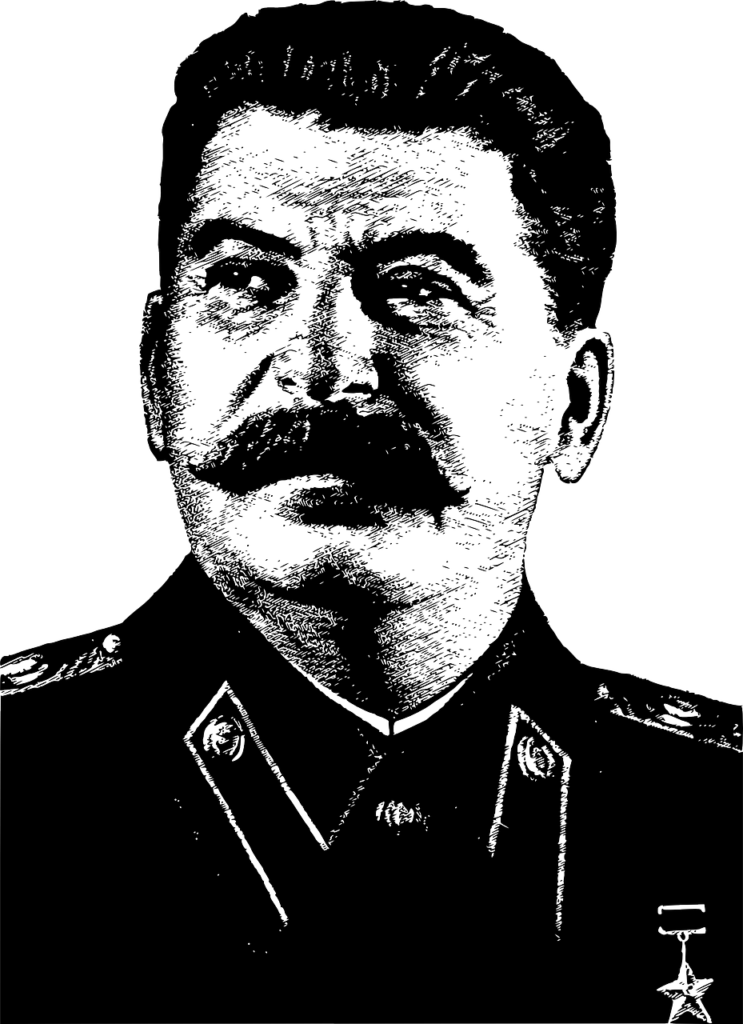 Hitler and Stalin were the bloodiest dictators in the world that’s why they had a lot in common. The main obsession for both of them was unlimited political power and no moral restrains could stop them on their way to the summit. In spite of ideological incompatibility of Hitler’s National Socialism and Stalin’s Communism the totalitarian regimes built by the two despots were quite similar.
Hitler and Stalin were the bloodiest dictators in the world that’s why they had a lot in common. The main obsession for both of them was unlimited political power and no moral restrains could stop them on their way to the summit. In spite of ideological incompatibility of Hitler’s National Socialism and Stalin’s Communism the totalitarian regimes built by the two despots were quite similar.
Both Hitler and Stalin were of modest decent. The former was born in a family of an unimportant Austrian customs official and the latter’s father was a drunkard boot maker from a tiny Georgian town. Both future political leaders were relatively short and looked unimpressive. The initial stage of their careers was a real failure: Hitler was not admitted to the School of Painting at the Academy of Fine Arts in Vienna and Stalin was expelled from the Tiflis Theological Seminary. For our two young men with unlimited ambitions this obvious lack of official recognition resulted in dissatisfaction with the existing social order. After the First World War, Hitler took part in creation and quickly became the leader of the National Socialist German Workers’ Party and Stalin long before the October Revolution of 1917 joined the ranks of Russian revolutionaries and became the disciple of Lenin, the head of the Bolsheviks.
Both future dictators ruthlessly struggled for political power but Hitler mostly targeted trade unions, Socialists, Communists and Jews. Stalin, on the contrary, shed a lot of blood of his comrades by physically eliminating first, the Left Opposition led by Leon Trotsky and Gregory Zinoviev and then the Right Opposition under Nikolai Bukharin to become an unquestionable leader of the All-Russian Communist Party. In both countries, all political parties besides the ruling Party (Nazi or Communist) were strictly banned. Two main tools used by Hitler and Stalin for total submission of their respective countries were large scale political terror and ideological indoctrination through educational system, literature, movies, paintings, and mass media. In Nazi Germany, the SS troops and Gestapo (Nazi Secret Police) were responsible for prosecution, detention and execution of all the regime opponents. In the USSR, the same role was played by the political police called at different stages Cheka, GPU, and NKVD. Hitler Youth and the League of German Girls were equivalents of the Soviet Komsomol (Union of Communist Youth) created for ideological brainwashing of the young generation.
Both Stalin and Hitler established severe ideological control over mass media and culture. In Nazi Germany, as in the USSR, the authorities actively encouraged denunciation by the population of all the politically suspect activities and persons. In both countries developed a real personality cult of their leaders: in every office hanged their portraits, their speeches were continuously broadcasted on the radio, the shelves of libraries and book shops were full of their printed works. It is interesting to note that both ideologies were based on hatred: Nazis hated their political opponents and all non Aryans; Communists hated all representatives of ruling classes (capitalists, bourgeoisie, nobility and clergy). Both ideologies were openly aggressive calling to exterminate national or social enemies not only at home but abroad as well. Hitler and Stalin actively prepared for the forthcoming war: the former promoted rearmament and creation of new armed forces; the latter launched the huge program of intensive industrialization aimed at the reinforcement of military potential. The Soviet industrialization was carried out at the expense of the rural population which suffered forced collectivization and the following famine of 1933-34. Both Hitler and Stalin nurtured aggressive plans against their neighbours: the former dreamed about “Lebensraum” in the east and about quitting with France; the latter wished to recover at least all territories belonging to the Russian Empire, i.e. the Baltic states, Finland, half of Poland etc. The organizational similarity of the two authoritarian regimes and the temporary coincidence of their political interests made possible Molotov-Ribbentrop Pact of 1939 which divided the Eastern Europe between two dictators and initiated World War II.
In such a way, we are coming to the conclusion that all dictatorships and totalitarian regimes are organized in the similar way and can be headed only by pathologically ambitious and unscrupulous persons capable to commit the worst crimes exactly like Hitler and Stalin.